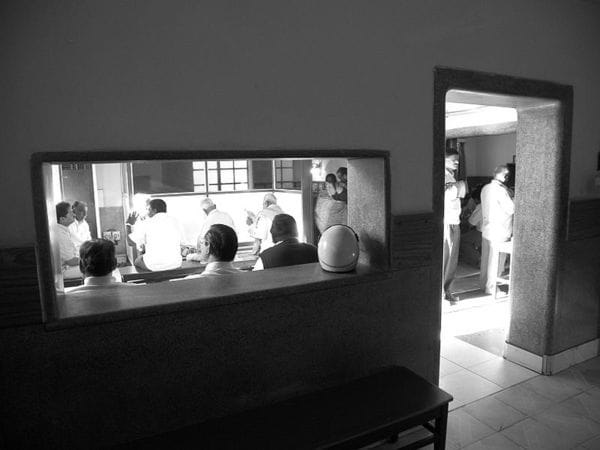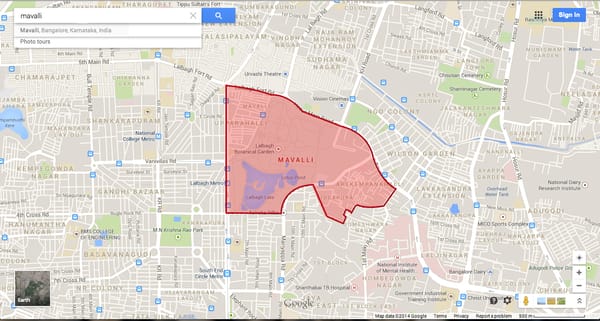Every true Bengaluru resident has heard of the legendary tales of the idli shop across from Lalbagh. Stories of pillow-soft idlis, mouth-watering masala dosas and piping hot coffee served in polished silver cups have spread far and wide. South Indian meals from this hotel chain are also world-famous.
Mavalli Tiffin Room (MTR) has ingrained itself so well in Bangalorean culture that having a meal there has pretty much become a ritual. Yet unbeknownst to many, MTR is steeped in rich history, boiling down to a small village in the heart of Bangalore, called Mavalli, and the perseverance of the Maiya family.
Yajnanarayana Maiya and Ganapayya Maiya, belonging to a section of Brahmins called Kota Brahmins, hailed from Parampalli, a village close to the coastal city of Udupi.
In 1924, they decided to open “Brahmin Coffee Club” on Lalbagh Fort Road in Mavalli, Bangalore. By 1936, Yajnanarayana Maiya had taken full charge of the restaurant and his brother returned to their hometown. Brahmin’s Coffee House was doing fairly well, but a rice shortage hit India when World War II came around in 1939.
During that time, Maiya decided to replace the rice used in idlis with semolina – this experimental replacement resulted in a version of idli that was not only original and innovative, but also delicious! Named “Rava Idli,” it became a permanent addition to the limited menu and grew in popularity. (However, some South Canarites dispute this. Rava Idli was quite common in all South Canara houses, as Brahmins are not supposed to eat rice items for breakfast during the days of rituals. However, it became a novelty commercially by MTR, according to them.)

Mavalli Tiffin Room once upon a time. Pic courtesy: Wikipedia (uploader: Rajesh Dangi)
Mavalli Tiffin Room established
In 1950, Yajnanarayana visited Europe, observing and experiencing western styles of restaurants and hospitality management. Impressed by the standards of hygiene set by them, he was determined to emulate the cleanliness in his own restaurant. Before starting a meal, each customer would receive a small booklet on proper dining etiquette – for instance, one page read that a customer should not use a saucer when having tea or coffee.
“I used to take my family all the time and they enjoyed the “Hello, chennagiddira?” by the staff and managers every time. They literally knew all of us by names. The last time we visited as a family was sometime in early 2000, and my son especially had not gone there in over 10 years. Last year, he took his wife and just entered and sat. The waiter randomly kept a plate of “Damroot” on his plate, before he could order. My son said, “Thank you, I had not ordered it, anyway,” and before he could complete, the waiter apparently said, “You used to start with this when you were a kid.”
-T Nagaraju, Resident of Bangalore.
When the restaurant moved to its current location in 1960 (just a few minutes away from the Brahmin Coffee Club), the name changed to “Mavalli Tiffin Rooms”. By this time, it was already a popular eatery and visitors flocked to the location like pigeons to bread. Often times, business meetings would happen over the traditional five course meal, and schoolchildren shared jokes over some rava idlis.
In 1968, Yajnanarayana passed away and Harischandra Maiya, his nephew, took over. MTR had made a name for itself, making it one of the top five most popular restaurants in Bangalore. Many members from the Bangalore – photos from a bygone age Facebook group mention that MTR was a regular stop during their school and college days.
India was in a state of emergency in the 1970s, and the government decreed that MTR along with four other well-known restaurants in Bangalore had to lower its prices, in order to accommodate everybody. While other restaurants’ quality became compromised, MTR maintained its standard that it had kept for decades. In 16 days, after publicly posting their losses every day, they closed down. Yet, due to the ingenuity and business prowess of the Maiya family (Sadananda Maiya, Yajnanarayana’s son, had joined the business), they began to sell ready-to-make mixes for idlis and dosas from a small departmental store. After the emergency period, MTR opened up again, with business booming better than before.

Map of Mavalli
Restaurant separated from packaged food division
20 years passed and MTR decided to split its restaurant from its readymade food industry. Harischandra Maiya ran the restaurant while Sadananda Maiya headed the packaged food business. By dividing into two divisions, Harischandra and Sadananda were able to focus closely on their respective subdivisions, improving on quality and range of products.
As a result, MTR continued its path to success as MTR Foods (the packaged foods company) soon took over the whole readymade food industry, riding on superior quality and a well-known brand name. In 2007, Orkla, a Norwegian company, bought MTR Foods for $80 million. Since then, MTR Foods as well as the restaurant have expanded – there are now six restaurant outlets in Bangalore, one in Singapore, and one in Dubai, and their packed foods are sold all across the world.
How has MTR impacted the lives of its customers? T Nagaraju, an MTR veteran, has a close relationship with the staff and the restaurant. “The cook, serving, managing and cleaning staff were hospitable to everyone… it was like a family to me and my family,” he describes nostalgically. For approximately four decades, Nagaraju has been a regular at MTR, believing that the friendliness of the staff, the excellent hygiene, and the supreme quality of food were what has kept it alive. Vikram Maiya, son of Harischandra Maiya, claims that these are the central pillars of the restaurant that have led to its success.

Mavalli Tiffin Room today. Pic: Dushyant Naresh
Recipe for success: Health, hygiene, quality!
When asked about MTR’s growth in Bangalore and internationally, he says that hygiene, food quality, and ambience had to remain the same as the original branch. New restaurants can only be opened after passing certain protocols, such as making sure the raw materials are the same, the level of cleanliness is maintained, and “at least one chef from the original [restaurant] can oversee the cooking.” Therefore, the process can be a slow one, but Vikram Maiya notes that these steps are taken so that the newer branches don’t “fall flat after expansion”. So far, the development has been smooth and has been received with great reviews.
The little tiffin room that started in the small village of Mavalli has grown to become one of the most popular Indian brand names in the world. Maiya notices that people “from all walks of life” enjoy a wonderful meal at the reputed restaurant. Bangalore’s reputation for being a “food city” can be partly attributed to the longevity and popularity of some of its oldest food joints, especially MTR.
Today, Mavalli village is trapped in the heart of an energetic, vibrant city, blanketed in the chaos of modern-day traffic. Encompassing all of Lalbagh and MTR, Mavalli represents a beautiful harmony between modernity and a slice of the past.
Related Articles
Silks to substations – Sarjapur through the years
Once upon a time when Sarjapur meant Muslin cloth…
A time when ‘South End’ was really Bangalore’s southern end
“(However, some South Canarites dispute this. Rava Idli was quite common in all South Canara houses, as Brahmins are not supposed to eat rice items for breakfast during the days of rituals. However, it became a novelty commercially by MTR, according to them.)”
This is bunkum for many reasons. Wheat was not widely used back then in South India, especially in Madras Presidency(to which South Canara belonged), rave made of wheat was not heard of too. Only ‘musure’ is not allowed during ekadeshi etc., so it was avalakki and akki thari stuff, idlis made of akki thari, may have been steamed instead of the batter.
Most importantly, there was no such thing called a breakfast during those times, if my ajji had heard of this claim, she would have whacked them with her maDigOlu(or may be not, as she wouldn’t have polluted her precious kOlu 😉 ), it took a lot of time to get the firewood burning fully and to be able to cook. So office goers used have a hearty brunch and go to office only by 11 AM! And return home by evening without eating anything in between, what ever breakfast items we eat now was a luxury then and was occasionally had as an evening snack, chakklis etc. were after supper snacks, there was no concept of tea/coffee with snacks during that time. 🙂
If you read a contemporary account during WWII in BGL Swamy’s Pradhyapakana Peethadalli, you can read the misadventures of the cook at Presidency College trying to make dosas out of wheat flour which had the jaws of the faculty glued together! 😀
I’ve heard an first person account of the similar experiment of a railway caterer (from their descendant), who without access to Bengal gram flour had to use rave with some other flour since the dough balls were breaking off, he patted them and fried, thus inventing the famous Maddur Vade!
Compare these stories to the story of Mysore Pak, I will agree that it is bunkum. But in my opinion, MTR & Maddur Tiffanies might be true in their claims!